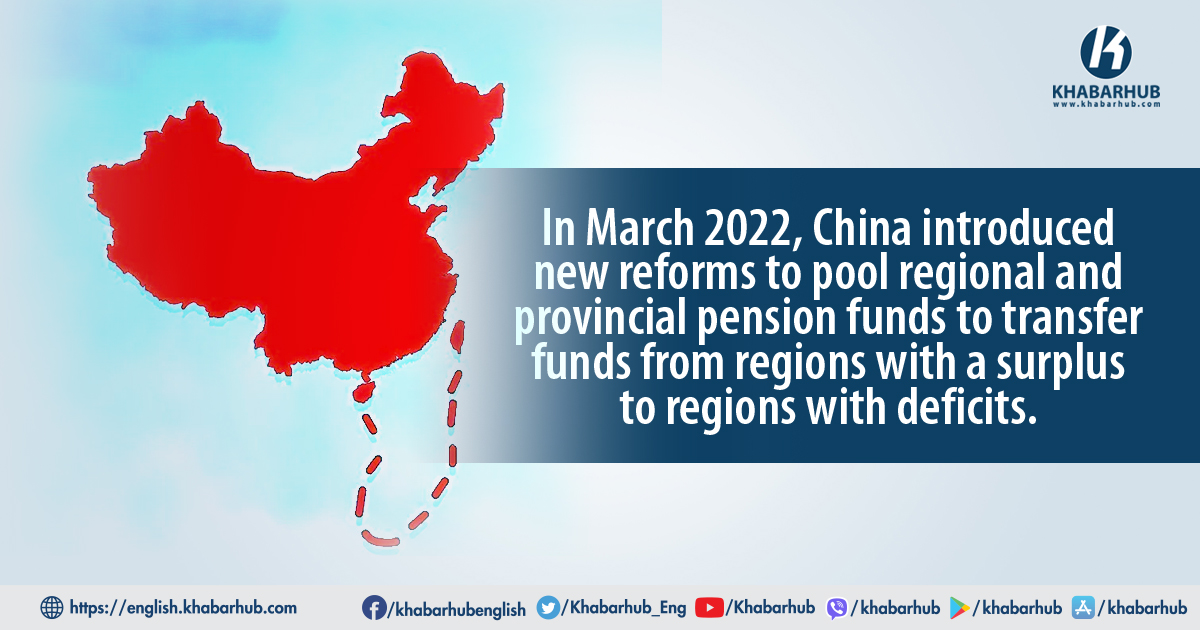Amid a retirement and pension crisis, rapidly ageing China released a five-year retirement reform blueprint last month following the Chinese Communist Party’s (CCP) Third Plenum meeting as the Asian major plans to increase the statutory retirement age of more than 500 million workers by introducing “voluntary participation with appropriate flexibility.”
The appropriately vague language in this case is not to inject uncertainty, but to blunt its impact, reports The Epoch Times, adding that China’s dual challenges of an aging population and declining birth rates—along with anaemic economic growth—is taxing the country’s social security and pension system.
The Chinese regime’s five-year reform blueprint includes a commitment to raise the retirement age, reports Japan-based Nikkei Asia.
According to the resolution adopted at the Third Plenum of the party’s 20th Central Committee of the CCP, China will gradually increase the statutory retirement age based on the principle of “voluntary participation with appropriate flexibility.”
In March 2022, China introduced new reforms to pool regional and provincial pension funds to transfer funds from regions with a surplus to regions with deficits.
For the first time, a key policy document outlines the principles of the reform, fuelling expectations that the decade-long initiative will soon be implemented, as per Nikkei Asia.
China’s current minimum retirement age to receive pension benefits — 60 for men and between 50 and 55 for women, depending on their job — is among the lowest globally, the report said.
By comparison, the retirement age is 62 for men and women in the United States and 66 in Germany.
While retirement rules have remained unchanged since 1951, China’s average life expectancy has increased from 67.9 years in 1981 to 78.2 years in 2021, according to the report.
Unlike the US, where a significant portion of retirees have either private pensions or self and employer-funded retirement plans in addition to state social security, China’s urban workers mostly rely on state pensions, reports said.
China’s rapidly aging population and longer life expectancy is reportedly a burden to the system.
According to data published by mainland China-based business magazine Caixin, in the nine years from 2012 to 2021, China’s elderly dependency ratio increased from 12.7 percent to 20.8 percent, which means every 100 workers had almost 21 retirees to support in 2021, up from 13 in 2012.
At the current pace, China’s state pension funds will run out in about a decade, while Beijing is in a race against time to reform and bolster its public pensions, the report added.
According to a recent report by Dow Jones & Company-owned MarketWatch, China is rapidly approaching a demographic time bomb as the country has one of the lowest fertility rates in the world, and the population is shrinking and aging.
The report said China is no longer expected to “get rich before it gets old.”
The country’s pension system was once a robust government-only programme, but, under strain, it has splintered, the report said, adding that it is a problem for which Japan is often mentioned as the prime example, but in China’s case the crisis encompasses 10 times the population.
As per MarketWatch, some 300 million people are expected to retire from the workforce over the next decade in China, putting enormous pressure on the shrinking employment-age cohort — millions of youth who are already overworked, disillusioned and burned out.
China’s premier government think tank, the Chinese Academy of Social Sciences, estimates that the basic pension fund for urban employees will be depleted by 2035.
Meanwhile, China, the world’s second-most populous country after India, is experiencing an unprecedented demographic shift, while the number of people aged 60 and older has risen from 126 million in 2000 to 297 million in 2023, doubling their share of the population.
The number of working-age Chinese (those who are 15 to 64) will shrink by about 170 million over the next 30 years, while the 65 and over population will surge to nearly 380 million, marking China as a “severely aging” society, according to the International Monetary Fund (IMF).
Exacerbating the situation is China’s declining birth rate as the number of new-borns has continuously declined since 2017, leading to a shrinking population in 2022.
Last year, the number of births in China dropped to a record low of 9.02 million as India passed China as the world’s most populous country.
The dual challenges of aging and declining birth rates are profoundly impacting the Chinese economy and burdening the social security system.
From 2012 to 2021, the dependency ratio for the elderly — persons 65 and over — increased from 12.7 percent to 20.8 percent, meaning that every 100 workers had about 21 elderly people to support in 2021, reflecting the growing pressure on the working-age population, reports Nikkei Asia.
This raises concerns about the sustainability of the country’s pension funds as several research institutions estimate that the country’s basic pension funds, which cover urban employees, will run out in about a decade, according to the report.
These half-measures and slow rollout of concrete plans over more than a decade reflect the CCP’s concerns over social stability amidst declining economic growth prospects, reports The Epoch Times, adding that the fundamental problems, however, remain unsolved.
For the first time in 2023, Chinese policymakers proposed raising the retirement age “in progressive steps,” but authorities have never spelled out details.
Later, in March 2015, then-Chinese Minister of Human Resources and Social Security (MHRSS) Yin Weimin said the delayed retirement plan would be formulated that year.
“We will first announce the plan, but its implementation will take at least five years,”Weimin said
However, no concrete progress was made until October 2020, when delayed retirement was included in the reform agenda of China’s 14th Five-Year Plan for the 2021 to 2025 period, as reported by Nikkei Asia.
In March 2022, China introduced new reforms to pool regional and provincial pension funds to transfer funds from regions with a surplus to regions with deficits.
Later, a person close to the MHRSS told mainland China-based Caixin that accelerating the implementation of reforms was emphasized again at an internal meeting in 2023.
These half-measures and slow rollout of concrete plans over more than a decade reflect the CCP’s concerns over social stability amidst declining economic growth prospects, reports The Epoch Times, adding that the fundamental problems, however, remain unsolved.









Comment